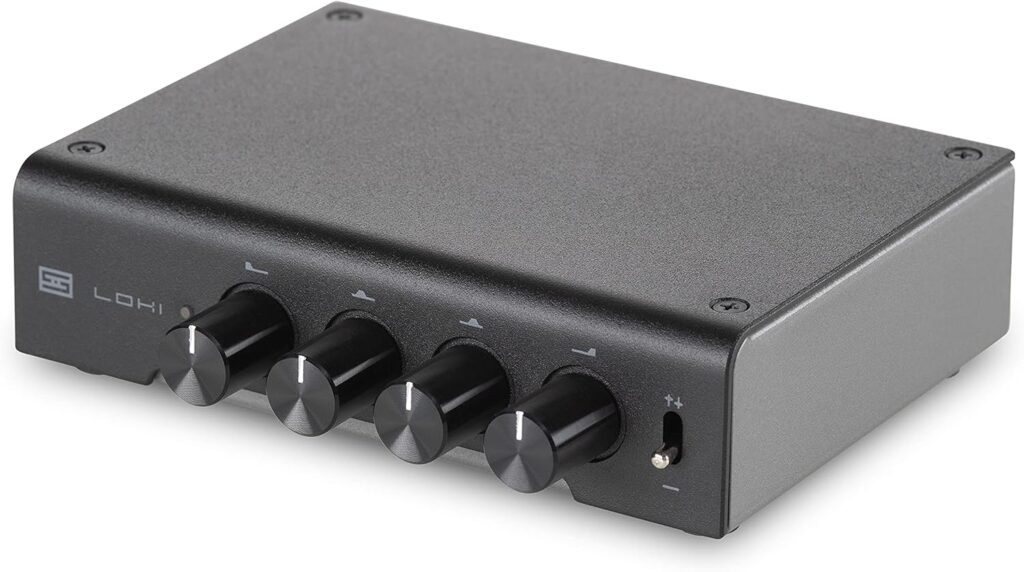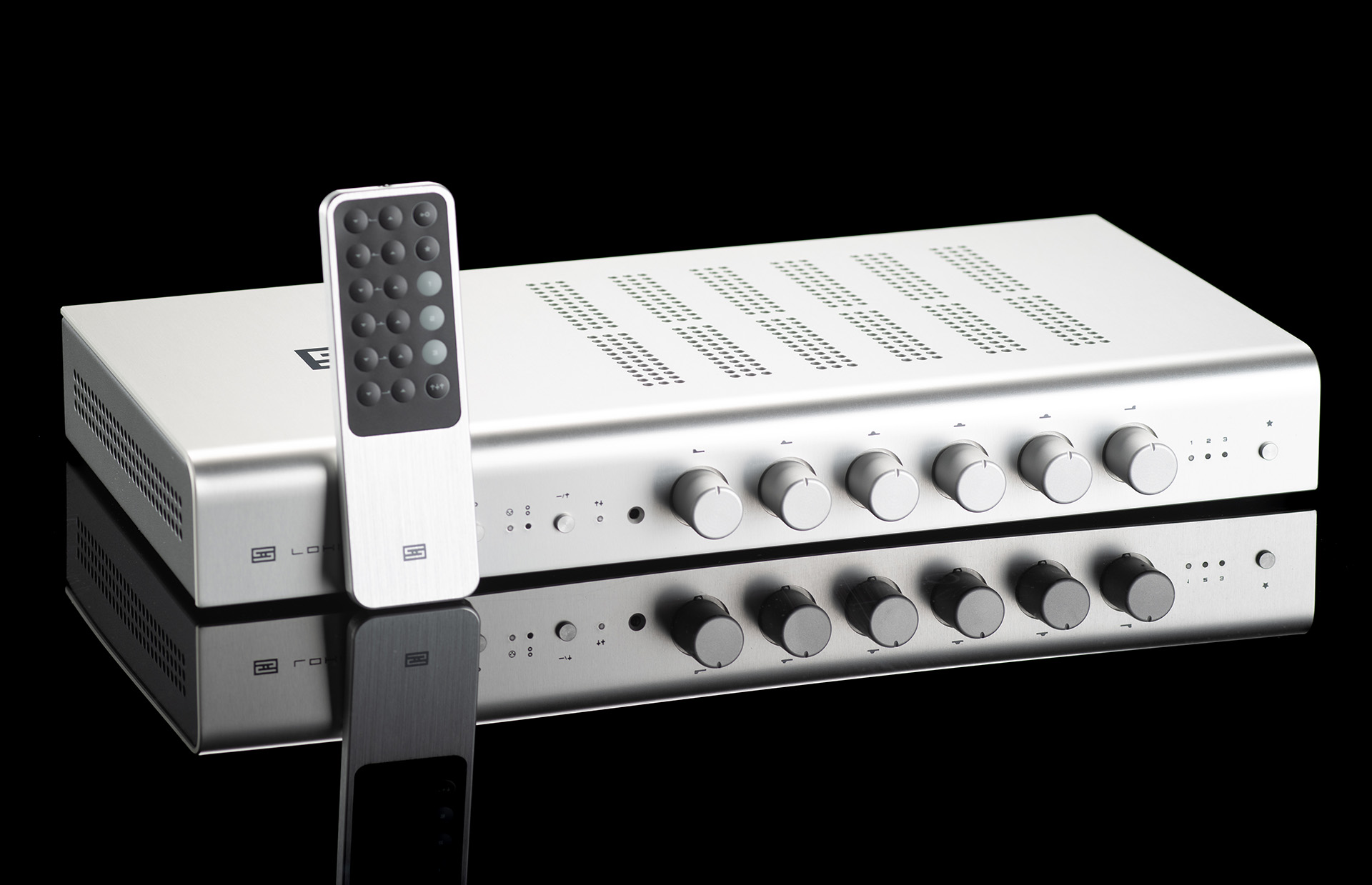Your music sounds flat. Maybe the bass is too muddy, or the vocals get lost in the mix. You’ve tried tweaking your amp settings and repositioning your speakers, but something’s still off. This is where an external equalizer comes into play.
Equalization, or EQ, is the process of adjusting the volume of different frequency bands within an audio signal. Simply put, it’s tweaking your audio signal to make it match your preferences, and it makes a big difference.
Now, I’m not saying that getting an EQ will automatically make your music sound like it came from heaven, but it will improve it with some small details that will make a lot of difference. Unlike most software EQs that process digital files, hardware equalizers work with your actual audio signal, giving you real-time control over your sound without the latency or processing limitations of computer-based solutions.
We’ve researched the best external equalizers under $500, from budget-friendly options perfect for casual listeners to professional-grade units that serious audiophiles swear by.
Best Overall: DBX 1215 ($455.00)

The DBX 1215 is a dual-channel, 15-band graphic equalizer that was designed to meet the needs of the most demanding sound reinforcement environments while offering the simplicity of straightforward controls. It provides standard features like dual channels, 15 2/3 octave bands, ISO frequency centers, +/-12 dB input gain range, and more. It has balanced inputs and outputs, and its layout is easy to use.
This external equalizer has a little bit of a learning curve to it, but once you get the hang of controlling it, you can take your sound to the next level. The build quality and design are excellent, and it can be used with a Rolls Switch to attach components. The DBX 1215 is the best external equalizer you can get under $500, and you will get the best value in equalization with this.
Pros:
- Excellent Build Quality
- Sleek design
- Dual-channel design for stereo processing
Cons:
- Learning curve
- No RCA jacks
- Rack-mount format may not suit all setups
Best Budget External Equalizer: Schiit Loki Mini+ ($188.00)

The Schiit Loki Mini+ is a compact 4-band analog equalizer designed for audiophiles who want simple, effective tone control without the complexity of professional graphic equalizers. Unlike traditional graphic equalizers with dozens of bands, the Loki Mini+ focuses on four carefully chosen frequencies: 20Hz (sub-bass), 400Hz (lower midrange), 2kHz (presence), and 8kHz (treble). This simplified approach makes it incredibly easy to use. The 20Hz and 8kHz bands offer ±12dB of adjustment, while the 400Hz and 2kHz bands provide ±6dB.
The compact desktop form factor (5 x 3.5 x 1.25 inches) makes it perfect for headphone setups or smaller audio systems where rack-mount gear isn’t practical.
The main limitation is its simplicity. With only four bands, you can’t make precise corrections to specific problem frequencies. If you need precise control over multiple frequency points, you’ll want a more comprehensive equalizer. The RCA-only connectivity also limits its use in professional audio systems.
Pros:
- Extremely affordable for audiophile-grade performance
- Simple, intuitive 4-band design
- Excellent technical performance (low noise/distortion)
- Compact desktop-friendly size
Cons:
- RCA connections only (no balanced I/O)
- It may be too simple for advanced users
Best Premium External Equalizer: ART EQ355 ($478.00)

The ART EQ355 is a professional dual-channel, 31-band graphic equalizer that is designed for live sound, studio, and home audio applications. It offers the precision of 31 bands per channel, each channel provides independently switchable range options of ±6dB or ±12dB, allowing you to choose between subtle adjustments or more dramatic tone shaping. It has variable high-pass and low-pass filters (10Hz-250Hz and 3kHz-40kHz, respectively), and the 20mm sliders feature center detents, making it easy to return bands to their neutral position and providing feedback during adjustments.
The EQ355 includes balanced XLR and 1/4″ TRS inputs/outputs plus unbalanced RCA connectors. The ground lift switch helps eliminate hum in professional setups. The 2U rack-mount format makes it ideal for home theaters or studio setups, though it may be overkill if you’re looking for something compact. The master level controls and bypass switches on each channel allow for quick A/B comparisons and level matching.
Pros:
- Multiple connectivity options (XLR, TRS, RCA)
- Very low noise floor and distortion
- Variable high-pass and low-pass filters
- Dual independent channels
Cons:
- 2U rack-mount size requires a rack or a large space
- Heavier than compact desktop units (9 lbs)
- It may be complex for beginners
Best Equalizer For Home Systems: Behringer DEQ2496 ($309.99)

The Behringer DEQ2496 is a digital mastering processor that brings professional-grade room correction and equalization to home audio at an accessible price. It supports audio up to 24-bit/96kHz, and it includes dual 31-band graphic equalizers, 31-band virtual paragraphic equalizers, and 10-band parametric EQ per stereo side.
The DEQ2496 can analyze your room using pink noise and automatically suggest EQ curves to compensate for acoustic problems. The real-time analyzer (RTA) with SPL and FFT capabilities provides visual feedback, helping you understand what’s happening in your room and make informed EQ decisions. You can also set the Q from 1/3 octave all the way down to 1/60 of an octave, allowing for precision when addressing specific room resonances.
The digital nature means there’s a learning curve to navigate the menu system, though the large display helps. Multiple memory presets allow you to save different room correction settings for various listening positions or speaker configurations. The unit offers both analog (XLR/TRS) and digital (AES/EBU, S/PDIF) connectivity.
For home theater enthusiasts or audiophiles struggling with bass boom, early reflections, or speaker-room interaction issues, the DEQ2496 offers problem-solving capabilities far beyond what traditional analog equalizers provide.
Pros:
- Automatic room correction with FFT analysis
- Multiple EQ modes (graphic, paragraphic, parametric)
- Extremely tight Q control (down to 1/60 octave)
- Built-in RTA for visual feedback
- Memory presets for different settings
- Both analog and digital I/O
Cons:
- Steep learning curve with complex menu system
- Requires understanding of room acoustics for best results
How To Choose The Best External Equalizer
The first decision is analog versus digital. Analog equalizers process your audio signal directly, offering warm, natural sound and hands-on control. Digital equalizers provide features like automatic room correction and visual feedback, but require digital conversion. Choose analog for simplicity and traditional character, or digital if you need room analysis and memory presets.
The number of bands determines your precision level. Simple 4-band equalizers are intuitive and perfect for general tone shaping. The 15-band range offers solid control for room correction and system tuning. If you need precision and control to address specific room resonances or speaker problems, 31-band equalizers provide the detail required, though they have a steeper learning curve.
Consider your connectivity and form factor. Check whether your system uses RCA (standard home audio), XLR/TRS (professional balanced), or needs both. Make sure the equalizer physically fits your setup and connects properly to your existing gear.
FAQs
Do I really need an external equalizer, or is software EQ good enough?
It depends on your setup and preferences. Software EQ works great if you’re listening exclusively through a computer and don’t mind the processing latency. However, external hardware equalizers work with any source, turntables, CD players, streaming devices, TVs; without requiring a computer in the signal path. They also process audio in real-time with zero latency. Many audiophiles also prefer the sound quality and control of hardware units.
Will an equalizer degrade my audio quality?
High-quality equalizers like those in our guide have minimal impact on audio quality when properly used. Units like the ART EQ355 and DBX 1215 have signal-to-noise ratios exceeding -90dB and distortion below 0.01%, meaning any degradation is essentially inaudible. The key is using the bypass function to compare; if you can’t hear a difference with the EQ set flat (all bands at zero), it’s transparent enough. Cheap equalizers can add noise and distortion, which is why investing in quality matters.
Can I use an external equalizer with my headphones?
Yes, but you need to ensure proper connectivity and impedance matching. Most rack-mount equalizers like the DBX 1215 are designed for line-level signals, so you’d place them between your source and headphone amplifier, not directly into headphones. Make sure your headphone amp has the appropriate inputs (RCA, XLR, or TRS) to match your equalizer’s outputs.
How do I know which frequencies to adjust?
Start by identifying what bothers you about the sound. The best approach is to boost one band at a time until you hear what that frequency affects, then cut it if it’s problematic or leave it if it’s fine. Digital equalizers with built-in analyzers like the Behringer DEQ2496 can show you which frequencies are problematic in your room, taking the guesswork out of the process.
Can an equalizer fix bad speakers or a poorly treated room?
An equalizer can help compensate for speaker deficiencies and room problems, but it has limits. It works best for fixing frequency response issues; however, it can’t fix fundamental problems like distortion, poor imaging, time-alignment issues, or early reflections. For serious room issues, combining EQ with basic acoustic treatment (bass traps, absorption panels) yields the best results.
